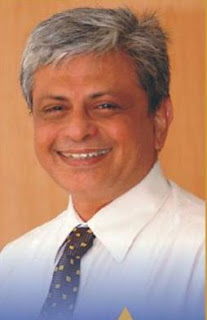The objectives of this short ten minute exercise -
- To learn a management tool that will be helpful in work life
- To apply the learning
- To use this exercise as a morning ritual to start a great day
Step 1 - the warm up
Keep your journal and pen at hand
Sit in a relaxed position with an intent to go into a ‘flow state’ to learn something new
Take three deep, powerful breaths to lock in your focus and start the next step
Step 2 - the learning
About Balanced Scorecard
Situations (examples) where this tool can be best used
- Driving organizational strategy
- Enhancing team performance
- Aligning department goals with strategy
The top three mental muscles (competencies) developed by practicing this tool
- Strategic thinking - Aligning short-term actions with long-term organizational goals
- Analytical and problem-solving skills - Analyzing data and identifying trends
- Holistic decision-making - Balancing priorities and considering multiple dimensions of success
A corporate story to understand the usage of this tool
Whitney Wolfe Herd (Founder, Bumble) story
Financial Perspective
Whitney Wolfe Herd launched Bumble with a mission to empower women in the dating and tech industries. By positioning Bumble as a premium, women-centric platform, the company generated significant revenue through subscriptions and in-app purchases. Its IPO in 2021 raised $2.2 billion, demonstrating its financial success.
Customer Perspective
Bumble differentiated itself by giving women the power to make the first move, addressing gender imbalances in online dating. The platform expanded into Bumble BFF and Bumble Bizz, fostering friendships and professional networking. High customer satisfaction scores and loyalty reflect its success in meeting users’ needs.
Internal Processes
The company focused on inclusive and innovative design processes, ensuring features like harassment filters and safety guidelines aligned with its mission. Bumble continuously improved user experience by integrating feedback and leveraging AI to enhance security and matchmaking algorithms.
Learning & Growth
Bumble invested in building a diverse and empowered workforce, with over 70% of leadership roles held by women. The company also promoted employee well-being and professional development, creating a culture aligned with its mission of empowerment.
Summary
By leveraging the Balanced Scorecard, Whitney Wolfe Herd aligned Bumble’s financial growth, customer satisfaction, internal efficiency, and workforce development with its mission, setting a new standard for inclusivity in tech and dating platforms.
A story from the World Wars
My personal story
Context
I want to create a business of helping people implement any self-help book of their choice or helping them write their own self-help book.
I guess the first thing I should do is to create a vision. Can I use a Balanced Scorecard for this? Let me try.
Financial - Create a business and revenue model
Customer - Identify client base. Create/ implement communication strategy
Internal business processes - Create clear onboarding and engagement processes
Learning and growth - Learn how to use social media, how to create videos, podcasts etc.
Step 3 - the reflection
Sit back, go down memory lane, think of various events in your work life where you could have used this learning.
If nothing comes to mind, think of a situation that would help you answer any one of these interview questions.
- “How do you ensure alignment between a team’s objectives and the company’s overall strategy?” - Talk about your view on cost reduction (financial) and customer experience (customer perspective); Talk about how you use processes such as CMMi or Lean principles (internal processes): Share your strategy about team’s competency growth (Learning and growth)
- “How do you measure the success of a project or initiative?” - Talk about the project metrics you use around the BSC perspective e.g. ROI (Financial), Customer retention (Customer), Error reduction (Internal Processes) and Team’s competency enhancement score (Learning and Growth)
- “How do you ensure continuous improvement in your team or department?” - Talk about your effort with respect to continuous improvement using the four perspectives of BSC
Step 4 - the practice
Apply your learning to the situation you selected above.
- Financial
- Customer
- Internal processes
- Learning & growth
Step 5 - the victory lap
Celebrate your achievement for a minute. Maybe a quick victory lap doing some energizing exercise?
**
To those who felt, “Intuition and past experience are my best tools. Why carry the ‘baggage’ of structured frameworks?” - Do you feel that the last ten minutes were worth the effort?
I must tell you that some inspirational companies have institutionalised this tool (Tata group, Infosys, Siemens AG, Shell)
This exercise is not only about management tools. It’s about building a neural pathway. And it’s about my mantra for creating small daily acts of feeling successful and happy
Don’t forget to carry this image 👇 in your mind. There could be a great situation where you may want to use the tool. Keep a log of all such situations. This practice will help you when you want to train someone.
My congratulations for your first dose of the day of success and happiness. Have a great day ahead.

No comments:
Post a Comment